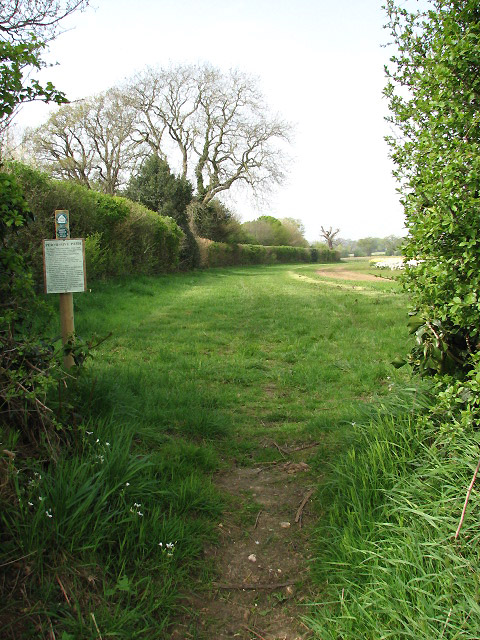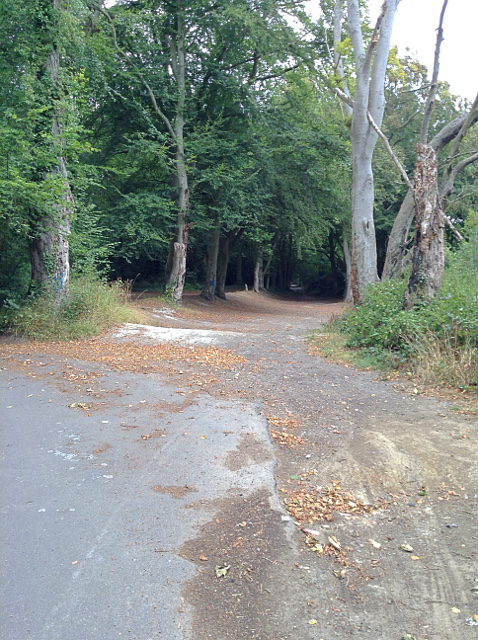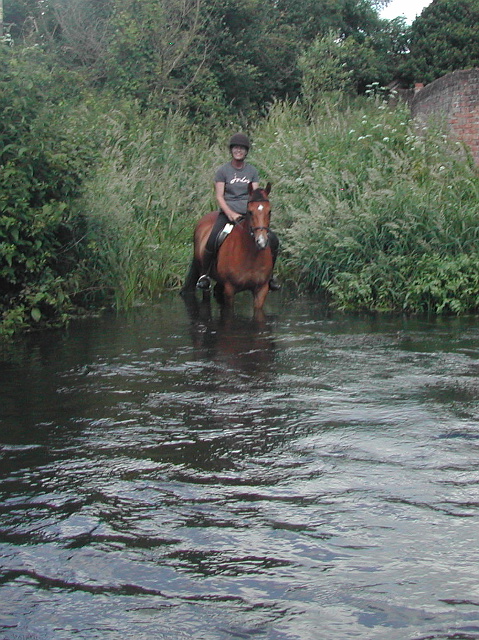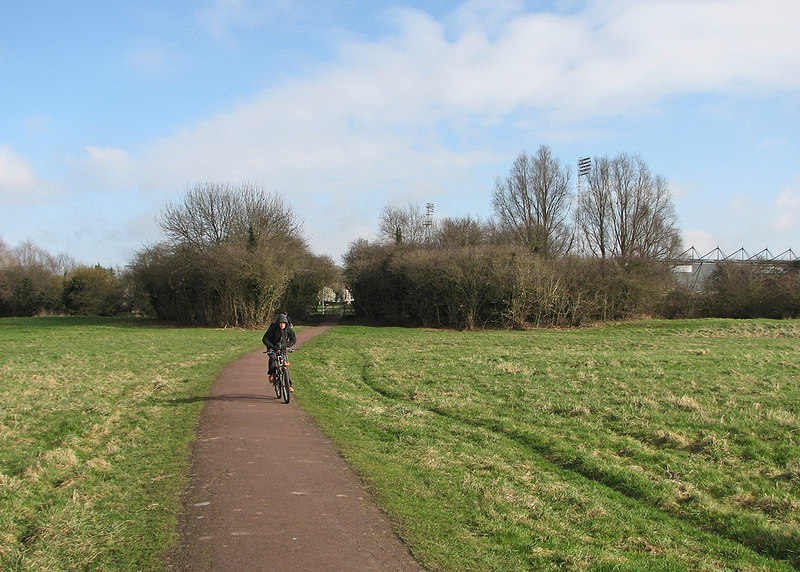This article was first published in the Spring 2018 issue of Waymark, the journal of the Institute of Public Rights of Way and Access Management, and is reproduced here with kind permission of the editor.
Section 257 of the Town and Country Planning Act 1990 confers broad powers on the local planning authority, by order, to stop up, divert or improve a footpath, bridleway or restricted byway (which I shall refer to indiscriminately as a ‘public path’) where it is necessary to enable development to be carried out in accordance with planning permission.
A widespread view is that paths diverted by s.257 may not be made subject to limitations. This article poses the question — why not?
 |
| An A-frame stile at Queensbury Bradford Can a s.257 order authorise this structure on the diverted path? Photo © Humphrey Bolton cc-by-sa |
A limitation is not defined in statute law, but is generally thought to be a constraint nominally imposed by the landowner on the otherwise lawful public entitlement to use the highway. A stile or gate is the most obvious and commonplace limitation encountered on public paths.
S.257 contains no express provision about imposing limitations in an order made under that section. But if we compare it to the other widely used power to divert public paths, in s.119 of the Highways Act 1980, s.119(4) provides for:
‘A right of way created by a public path diversion order may be either unconditional or…subject to such limitations or conditions as may be specified in the order.’
This variance in drafting is often held to mean that s.257, lacking the express power to impose limitations found in s.119(4), cannot be used to create a new public path subject to limitations (let’s leave aside here the question of conditions, the meaning of which is elusive). But we should make some allowance for the diverse origin of these provisions: s.257 originates in s.94 of the Town and Country Planning Act 1968 (and before that, for highways generally, in s.49 of the Town and Country Planning Act 1947), while s.119 originates in s.42 of the National Parks and Access to the Countryside Act 1949. Thus s.119 was conceived in the 1949 Act which established the definitive map and statement — including s.27(4), which provided for the statement to contain any ‘limitations or conditions affecting the public right of way’. It was hardly surprising that Parliamentary counsel, drafting both clauses in Part IV of the Bill, saw a need for diversion orders expressly to amend the definitive statement in relations to limitations, and put words in s.42 to do just that.
And while the provision for limitations in s.119 has, because of its neighbouring familiarity, found its way into other powers subsequently inserted in the 1980 Act to divert paths — ss.119B (schools) and 119D (SSSIs) but not, oddly, s.119A (railways) — and is seen in the powers to create paths (ss.25 and 26), which also originated in the 1949 Act, it is not found in s.30 (dedication of highway by agreement with parish council). Why not? Because the 1980 Act is a consolidating act (it draws into one place provisions found previously in many acts), and s.30 does not derive from the 1949 Act, but from s.8(1)(g) of the Local Government Act 1894. It was drafted in another era, and no-one saw fit, in 1959 (when highways legislation was first consolidated) or in 1980 (when the legislation was consolidated again), to revise it to bring it into line with other provisions in the host Act. Does this mean that s.30 agreements cannot include limitations? No more nor less than s.257 orders.
Section 30 of the 1980 Act, and s.257 of the 1990 Act, have something in common. They both enable works to be carried out on the new way (whether created under s.30, or diverted under s.257). S.257(2)(b) provides that:
‘(2) An order under [s.257] may…provide—
(b) for authorising or requiring works to be carried out in relation to any [public path] for whose stopping up or diversion, creation or improvement provision is made by the order’
Whereas s.30(2) provides that, where there is a s.30 agreement:
‘(2) [the parish council] may carry out any works (including works of maintenance or improvement) incidental to or consequential on the making of the agreement or contribute towards the expense of carrying out such works, and may agree or combine with the council of any other parish or community to carry out such works or to make such a contribution.’
Subs.(2) above was added to the 1959 Act, to expand on what was originally contained in s.8(1)(g) of the 1894 Act, and remains part of s.30 of the 1980 Act.
What sort of works are contemplated by these provisions? Under s.257, the works can be done on the diverted way, or on an alternative way which is to be improved under subs.(2)(a) (it seems that the works can be done even on the way stopped up, perhaps physically to prevent continuing use). Such works might include:
- improving the surface;
- widening the path (if improving an existing way under s.257(2)(a));
- street furniture (such as benches or litter bins);
- a bridge;
- safety apparatus (such as a chicane, or barrier adjacent to a carriageway);
- a stile or gate;
- a cattle grid and bypass;
- a private road crossing with gates.
But some of these works would amount to a limitation on the newly created public right of way — for example, a gate or chicane. Can an order under s.257, or an agreement under s.30, provide for them, notwithstanding the absence of express words about imposing limitations?
Section 257 is a pretty flexible provision: it facilitates development on land crossed by public rights of way (and s.247 does something similar for land crossed by highways generally). It enables stopping up, or diversion, or combined stopping up and creation, or stopping up together with improvement of an existing highway. It enables a replacement way to be of a different status to the one stopped up (although if the replacement way is a carriageway open to mechanically propelled vehicles, it seems there can be no provision for works under subs.(2)(a)). Beyond the initial ‘necessity’ mandate, it imposes no statutory tests on the confirmation of an order other a simple merits assessment. Why should we infer that, despite this flexibility, and despite a power to provide for works, those works cannot limit the right of way in any respect?
There is no obvious reason why s.257 should address limitations: it is enacted in an Act about planning, not highways. Limitations are not mentioned in the 1990 Act (nor in the 1968 Act) in this context. It would be very odd to read ‘works’ as being confined to things which do not amount to limitations, particularly because such an interpretation would greatly limit the scope of the developer to remedy the constraint imposed by the existence of a highway across the development site. If the site is being developed for housing, that may not always be a problem — but what if it’s being developed with an agricultural barn, and stiles or gates are essential to the alternative route — can it really be intended that s.257 is useless for such purposes, and recourse must be had to s.119? What if the diverted way begins in a field, and then crosses a housing estate: must the necessary gate out of the field be authorised under s.147?
Section 30 had different antecedents. But it is now nearly 125 years old. It would be an empty power if a parish council could not agree with a landowner to create a new highway unless it was free from limitations. It would be impossible to create a public path across fields (no stiles or gates allowed).
Apart from s.30 (and s.119A), s.116 of the 1980 Act also lacks a power to impose limitations. S.116 enables a highway to be diverted in the magistrates’ court. Its origins are found in s.16 of the Highways Act 1773, and quite possibly earlier than that. But neither s.116, nor the provisions from which it is derived, have anything to say about limitations or even works. Yet many readers will have encountered court orders diverting public paths which inevitably provided for the negotiation of field boundaries by gates or stiles. Some are still made with such limitations today. Is the presence of these limitations unlawful even now — after all, limitations cannot be legitimised by the passage of time?
Or can we conclude that the express power to impose limitations in the s.119 suite of provisions is an ‘avoidance of doubt’ provision — there to make clear that the power exists (and should be employed where appropriate), but not to be taken so that its absence from other provisions implies that the power is then wanting? After all, the creation of a new public path is a bargain between the local authority acquiring new rights across land on behalf of the public, and the landowner conceding those rights. Why should it be an ‘all or nothing’ arrangement by which the landowner is compelled to retain nothing of benefit (such as the right to maintain a gate)?
Even if the answer is ‘no’ (and that would have a pretty radical impact on the efficacy of s.116 orders), we can still rely, for the purposes of s.257 and s.30, on the power to construct works. Works specified in a s.257 order or s.30 agreement may well not be limitations, and need not be recorded in the definitive statement — but they may be, in which case, they should be. It surely is a bizarre interpretation of s.257 which requires the works contemplated by s.257(2)(b) carefully to be sifted out to decide which do not amount to limitations and so are capable of authorisation, without any clear words to impose such a requirement. If the draughtsperson intended such an outcome, why was the expression ‘works’ not expressly constrained in any way?
But what about the prescribed form of s.257 order? R.2(1) of the Town and Country Planning (Public Path Orders) Regulations 1993 provides that:
‘A public path order shall be in the relevant form set out in Schedule 1…or in a form substantially to the like effect, with such modifications as may be required…’.
Form 1 in Sch.1 allows for the order to recite (in art.2) how the new way will be improved, or (in art.4) how works will be carried out to it, and these improvements or works should be described in the schedule to the form of order. Once one accepts that the order may specify works which amount to a limitation on the public right of way, and those works are recited in the schedule to the order, it remains only to record those works as limitations in the definitive statement via the consequential legal event modification order made under s.53(3)(a) of the Wildlife and Countryside Act 1981, or in a combined order. For example, the order might provide:
‘4. The following works shall be carried out in relation to the highway described in Part 2 of the Schedule: installation of gate to British Standard 5709:2006 at point X on the order plan.’
and Part 2 of the Schedule might read:
‘Description of site of alternative highway
…passing through a gate at point X, grid reference TQ05677650…’
Such drafting is consistent with r.2(1), and the gate is a work contemplated by s.257(2)(b). Why should the gate now not be recorded as a lawful limitation in the legal event modification order?
The express reference to limitations in s.119 of the 1980 Act is helpful, and ensures that provision for limitations is considered in the context of any public path diversion order. But it should not be taken to establish the benchmark for all other provisions enabling the creation of new public paths, which originate in other enactments, from other eras, with other purposes. There need be no limitation on the use of limitations.





